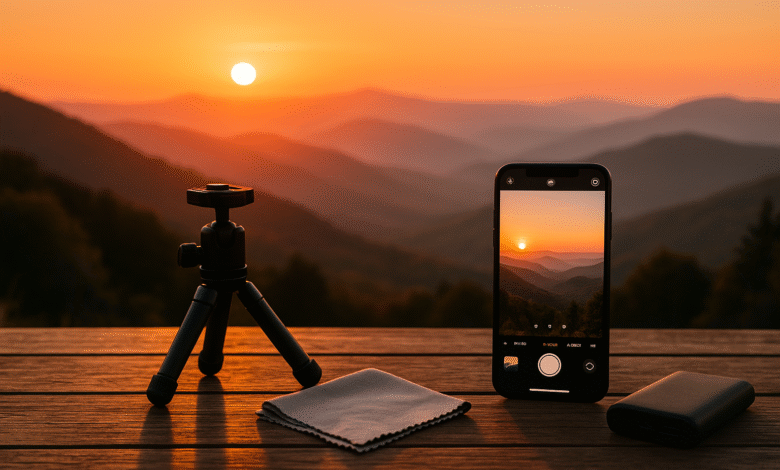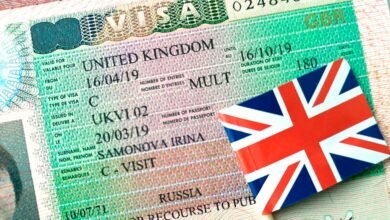Travel Photography Tips: Instagram-Worthy Shots
Master travel photography with proven tips for Instagram-worthy shots. Learn composition, lighting, editing techniques, and mobile photography secrets for stunning travel photos.

Travel photography has become one of the most popular ways to document and share adventures, with millions of stunning images flooding social media feeds daily. Whether you’re exploring ancient temples in Cambodia, wandering through colorful markets in Morocco, or capturing sunset views from a remote mountain peak, knowing how to take Instagram worthy shots can transform your ordinary vacation snaps into compelling visual stories that truly capture the essence of your journey.
The rise of smartphone technology and accessible photo editing apps has democratized travel photography, allowing anyone to create professional-looking images without expensive equipment. However, taking photos that stand out in today’s saturated social media landscape requires more than just pointing and shooting. It demands understanding fundamental photography principles, mastering mobile photography techniques, and developing an eye for composition that draws viewers into your travel experiences.
This comprehensive guide will walk you through proven strategies used by successful travel photographers and Instagram travel photography experts. From mastering the golden hour to understanding the rule of thirds, from choosing the right equipment to editing your photos with precision, you’ll discover actionable techniques that will elevate your travel photography game and help you create images that not only capture memories but also inspire others to explore the world.
EXPLORE THE CONTENTS
Understanding the Fundamentals of Travel Photography
Master the Rule of Thirds for Better Composition
The rule of thirds remains one of the most powerful photo composition techniques in travel photography. This fundamental principle involves dividing your image into nine equal sections using two horizontal and two vertical lines, then placing your most important subjects along these lines or at their intersection points.
Most smartphones now include grid lines in their camera settings, making it easier to apply this technique in real-time. When photographing landscapes, position the horizon line along either the upper or lower third line rather than centering it. For portraits, align your subject’s eyes with the upper third line to create more engaging and dynamic compositions.
However, don’t feel constrained by this rule. Sometimes breaking it creates more impact, particularly when shooting symmetrical subjects like reflections in water or architectural elements. The key is understanding when the rule of thirds enhances your image and when other compositional approaches might work better.
Harness the Power of Golden Hour Lighting
Golden hour represents the holy grail of travel photography lighting. This magical period occurs during the first hour after sunrise and the last hour before sunset, when the sun casts warm, soft light that flatters virtually any subject. The low angle of the sun creates longer shadows, adds depth to your images, and produces that coveted warm glow that makes photos pop on Instagram feeds.
Planning your shoots around golden hour requires some preparation, but the results are worth the early wake-up calls or late evening sessions. Use weather apps to check precise sunrise and sunset times for your destination, and scout locations in advance during the day to identify the best vantage points for golden hour shots.
During harsh midday sun, seek out shaded areas or use the strong light creatively by incorporating dramatic shadows into your compositions. Overcast days provide excellent soft, even lighting for portraits and detail shots, so don’t let cloudy weather discourage your photography efforts.
Essential Equipment for Instagram Travel Photography
Smartphone Photography Gear
Modern smartphone photography capabilities rival many traditional cameras, making your phone the perfect travel companion for capturing Instagram worthy shots. However, a few key accessories can significantly improve your mobile photography results.
A sturdy phone tripod enables sharp images in low light conditions and allows for precise composition when shooting self-portraits or group photos. Look for lightweight, compact options that won’t weigh down your luggage. Clip-on lenses can expand your creative possibilities, with wide-angle attachments perfect for landscapes and macro lenses ideal for capturing intricate details.
Consider investing in a portable phone charger or power bank, as photography apps and constant camera use drain battery life quickly. Clean your lens regularly with a microfiber cloth, as even small smudges can significantly impact image quality.
Camera Equipment for Serious Travel Photographers
While smartphones excel at convenience and instant sharing, dedicated cameras offer greater control and image quality for serious travel photography. Mirrorless cameras provide an excellent balance between image quality and portability, with interchangeable lenses allowing you to adapt to different shooting situations.
A versatile zoom lens covering wide-angle to moderate telephoto ranges (such as 24-70mm equivalent) handles most travel photography scenarios. Pack a lightweight tripod for long exposures, night photography, and sharp landscape images. Don’t forget extra batteries and memory cards, as these items can be expensive or difficult to find in remote destinations.
Composition Techniques That Create Visual Impact
Leading Lines and Perspective
Leading lines guide viewers’ eyes through your images, creating depth and drawing attention to your main subject. Look for natural and architectural elements like rivers, pathways, coastlines, bridges, or building edges that can serve as visual guides within your frame.
Experiment with different perspectives to make ordinary subjects extraordinary. Get low to the ground for dramatic foreground elements, or find elevated positions for unique overhead shots. Changing your angle by just a few feet can transform a mundane scene into a compelling photograph.
Framing and Negative Space
Natural frames like doorways, windows, tree branches, or rock formations can add depth and context to your travel photos. These elements create layers within your image and help isolate your main subject from potentially distracting backgrounds.
Negative space – areas of your image without prominent subjects – can be just as important as the main focal point. Strategic use of empty space creates visual breathing room and can emphasize the scale and grandeur of landscapes or architectural subjects.
Also Read: Budget Travel Hacks: Luxury Experiences for Less
Capturing Authentic Travel Moments
Beyond Tourist Shot Clichés
While iconic landmarks deserve their place in your travel photography portfolio, the most memorable images often capture authentic moments that reveal the true character of a destination. Seek out local markets, street scenes, cultural celebrations, and daily life activities that showcase the human element of travel.
Candid shots of locals going about their daily routines, children playing, or vendors at work often convey more emotion and storytelling power than posed tourist photos. Always be respectful and ask permission when photographing people, and consider learning basic phrases in the local language to communicate your intentions.
Solo Travel Photography Techniques
Solo travel photography presents unique challenges, but several strategies can help you capture great images of yourself and your experiences. Self-timer functions work well for planned compositions, while burst mode increases your chances of getting the perfect expression or pose.
Don’t hesitate to ask fellow travelers or friendly locals to take your photo. Most people are happy to help, and this interaction often leads to interesting conversations and new perspectives on your destination. Consider bringing small props like maps, local food items, or cultural souvenirs to add context and storytelling elements to your self-portraits.
Mobile Photography Tips for Instagram Success
Smartphone Camera Settings and Features
Modern smartphones offer sophisticated camera controls that rival traditional cameras when used properly. Familiarize yourself with manual exposure controls, focus locking, and burst mode features available on your device.
HDR mode can be valuable for high-contrast scenes, but use it judiciously as overly processed HDR images can look unnatural. Portrait mode creates attractive background blur for people photos, while night mode significantly improves low-light performance on newer phones.
Clean your lens frequently, as fingerprints and dust can dramatically affect image quality. Enable grid lines to help with composition, and remember that you can always crop images later, so don’t worry about getting the framing perfect in-camera.
Shooting Techniques for Better Mobile Photos
Hold your phone steady with both hands and brace yourself against stable surfaces when possible to minimize camera shake. Tap to focus on your main subject before taking the shot, and consider using the volume buttons as a shutter release for more stable handheld shooting.
Take multiple shots of important scenes from slightly different angles and compositions. Mobile photography allows for experimentation without the cost of film, so don’t hesitate to try various approaches to the same subject.
Photo Editing Apps That Transform Your Images
Professional Editing with Adobe Lightroom Mobile
Adobe Lightroom Mobile stands out as one of the most powerful photo editing apps for travel photography. The free version provides comprehensive editing tools including exposure, contrast, highlight, and shadow adjustments. The subscription version adds advanced features like selective masking, gradient filters, and RAW file support.
Lightroom’s strength lies in its precise color control and the ability to create and save custom presets for consistent editing across multiple images. The app syncs seamlessly with desktop versions, allowing you to start editing on your phone and finish on your computer.
VSCO for Instagram-Perfect Aesthetics
VSCO has become synonymous with Instagram travel photography thanks to its film-inspired filters and community of creative photographers. The app excels at creating cohesive visual aesthetics through its carefully crafted presets that emulate classic film stocks.
VSCO’s editing tools strike an excellent balance between simplicity and control, making it accessible for beginners while offering enough depth for experienced editors. The app’s social platform provides inspiration and connects you with like-minded photographers worldwide.
Snapseed for Quick, Professional Results
Google’s Snapseed offers professional-grade editing tools completely free, making it an excellent choice for budget-conscious travelers. The app includes advanced features like selective adjustments, healing tools, and perspective correction that can rescue problematic images.
Snapseed’s user interface emphasizes gestures and intuitive controls, allowing for quick edits without complicated menus. The app’s “Looks” feature provides preset starting points that you can customize to match your personal style.
Planning and Research for Better Travel Photography
Location Scouting with Digital Tools
Successful travel photography often begins before you leave home. Use Google Earth, Instagram location tags, and photography websites like 500px to research potential shooting locations and identify unique perspectives that haven’t been overshot.
Pinterest serves as an excellent inspiration tool for gathering ideas and creating mood boards for your trip. However, use these references as starting points rather than exact templates – the goal is to create your own unique interpretation of each destination.
Timing and Weather Considerations
Research the best times to visit specific locations for optimal lighting and fewer crowds. Many popular tourist destinations offer dramatically different photographic opportunities depending on the season, weather conditions, and time of day.
Weather apps with hourly forecasts help you plan shoots around changing conditions. Don’t dismiss overcast or stormy weather – these conditions often create moody, dramatic images that stand out from typical sunny vacation photos.
Advanced Techniques for Instagram-Worthy Results
Movement and Dynamic Elements
Incorporating movement into your travel photos adds energy and visual interest that static images often lack. Use slightly slower shutter speeds to create motion blur in waterfalls, waves, or moving vehicles while keeping stationary elements sharp.
Panning techniques – following moving subjects with your camera while using slower shutter speeds – can create dynamic images where the subject remains relatively sharp against a blurred background that conveys speed and movement.
Creative Use of Reflections and Symmetry
Water surfaces, glass buildings, and polished floors offer opportunities to create striking reflections that double the visual impact of your compositions. Puddles after rain can transform ordinary street scenes into artistic abstractions.
Symmetrical compositions work particularly well for architectural photography and can create powerful, balanced images that command attention on social media feeds. Look for natural and artificial symmetries in bridges, doorways, corridors, and landscape formations.
Building Your Instagram Travel Photography Style
Developing a Consistent Aesthetic
Successful Instagram travel photography accounts often showcase consistent visual styles that make their content instantly recognizable. This doesn’t mean every photo should look identical, but rather that your images should share common elements like color palettes, contrast levels, or compositional approaches.
Experiment with different editing styles and presets until you find approaches that resonate with your personal vision. Save your favorite settings as custom presets to ensure consistency across your travel photography portfolio.
Storytelling Through Photography Sequences
Think beyond individual images and consider how your photos work together to tell the story of your travels. Mix wide establishing shots, detailed close-ups, and human interest photos to create a comprehensive narrative of each destination.
Consider the pacing and flow of your Instagram feed, alternating between different types of images to maintain visual interest. Travel photography succeeds when it transports viewers to your destinations and makes them feel part of your journey.
Common Mistakes to Avoid
Overprocessing and Filter Abuse
While photo editing apps offer powerful tools for enhancing your images, restraint often produces better results than heavy-handed processing. Overly saturated colors, excessive contrast, and obvious filter effects can make your photos look artificial and amateurish.
Aim for edits that enhance the natural beauty of your subjects rather than completely transforming them. The best Instagram worthy shots often feature subtle processing that improves the image without calling attention to the editing itself.
Neglecting the Human Element
Technical perfection means little if your images lack emotional connection. The most engaging travel photos often include human elements – whether that’s people interacting with their environment, cultural activities, or simply the scale provided by including people in landscape shots.
Don’t focus so intensely on capturing the perfect shot that you forget to experience and enjoy your travels. The most authentic and compelling images often emerge from genuine moments of discovery and wonder.
Sharing and Engaging on Instagram
Hashtag Strategy for Travel Photography
Research and use relevant hashtags to increase the discoverability of your Instagram travel photography. Mix popular general tags like #travelgram and #wanderlust with specific location-based hashtags and niche photography tags that relate to your style and subjects.
Create a mix of broad and specific hashtags to reach different audiences. Tools like Later can help you research effective hashtag combinations and track their performance over time.
Building Community and Engagement
Successful Instagram accounts focus on building genuine connections rather than just accumulating followers. Engage authentically with other travel photographers, share stories behind your images, and respond thoughtfully to comments on your posts.
Consider collaborating with local photographers or other travelers to cross-promote content and expand your reach to new audiences interested in travel and photography.
Conclusion
Mastering travel photography for Instagram success requires combining technical knowledge with creative vision and authentic storytelling. By understanding fundamental principles like the rule of thirds and golden hour lighting, selecting appropriate equipment for your travel style, and developing proficiency with photo editing apps like Lightroom and VSCO, you can consistently create Instagram worthy shots that capture the essence of your adventures. Remember that the most compelling travel photos emerge from genuine experiences and emotional connections with your destinations. Focus on developing your unique perspective, experiment with different techniques, and always prioritize the joy of discovery over the pursuit of social media perfection. With practice and patience, your travel photography will evolve from simple vacation snapshots into powerful visual stories that inspire others to explore the world while preserving your most precious travel memories in stunning detail.







